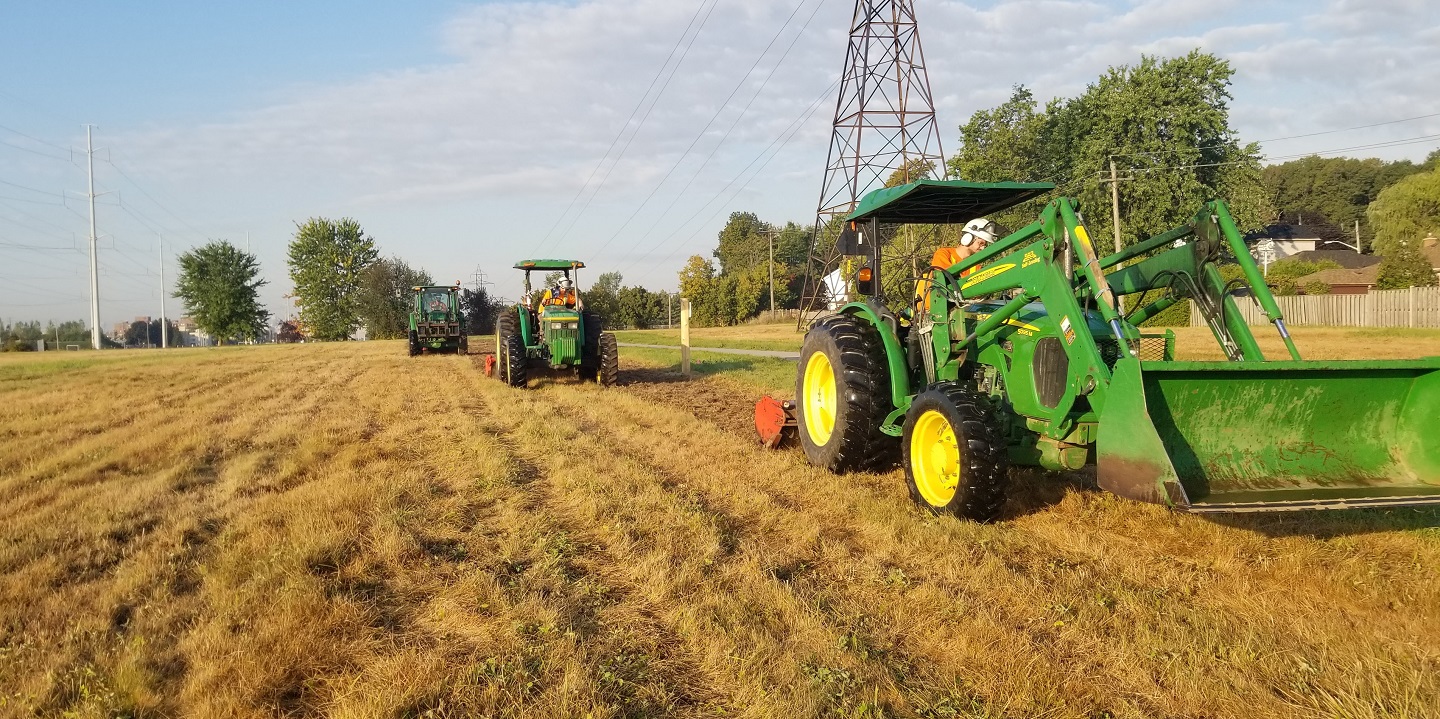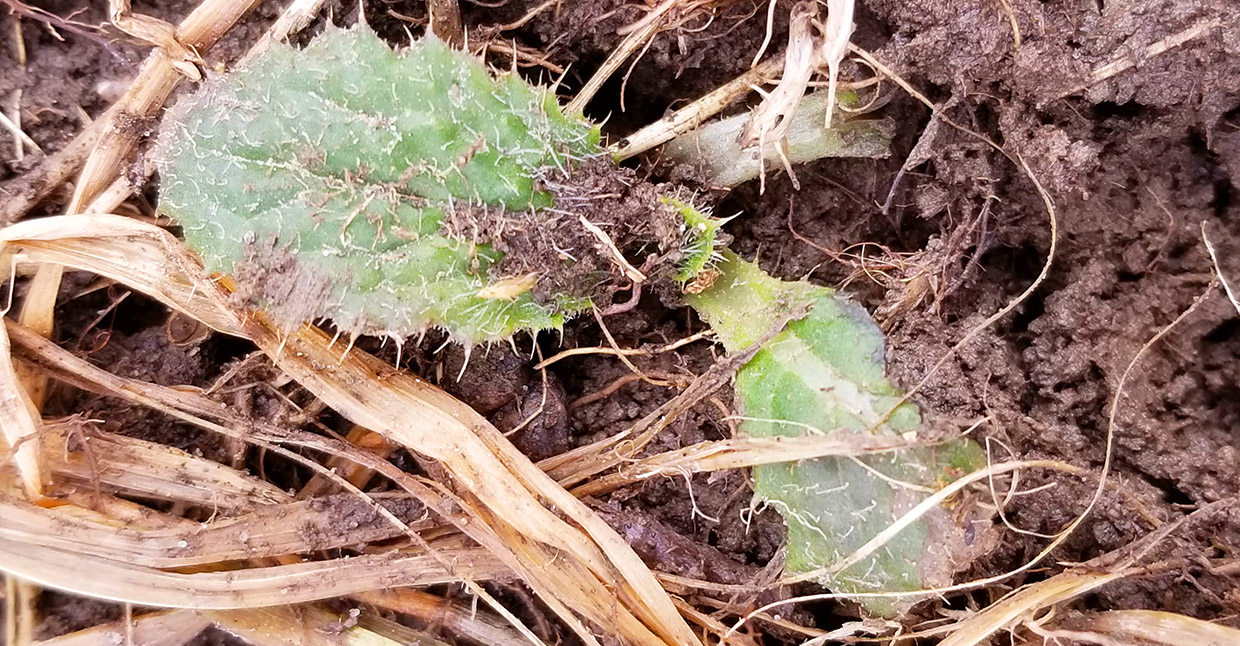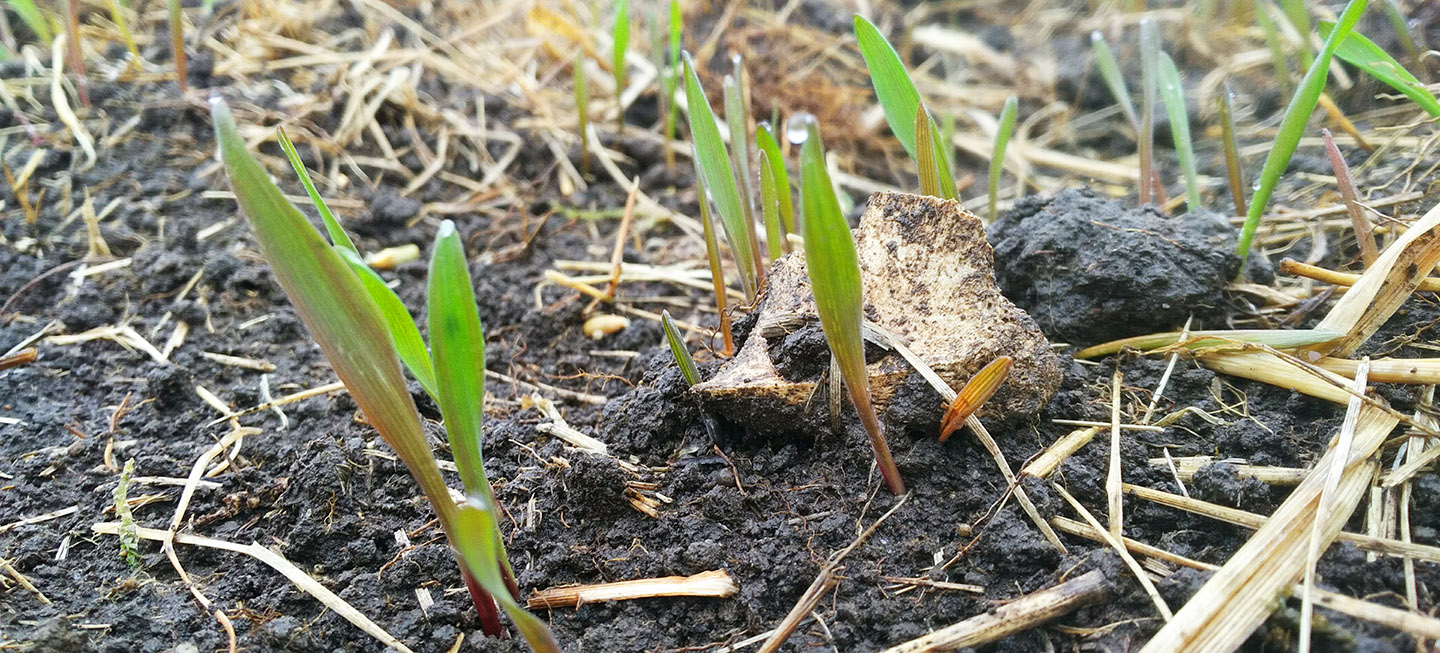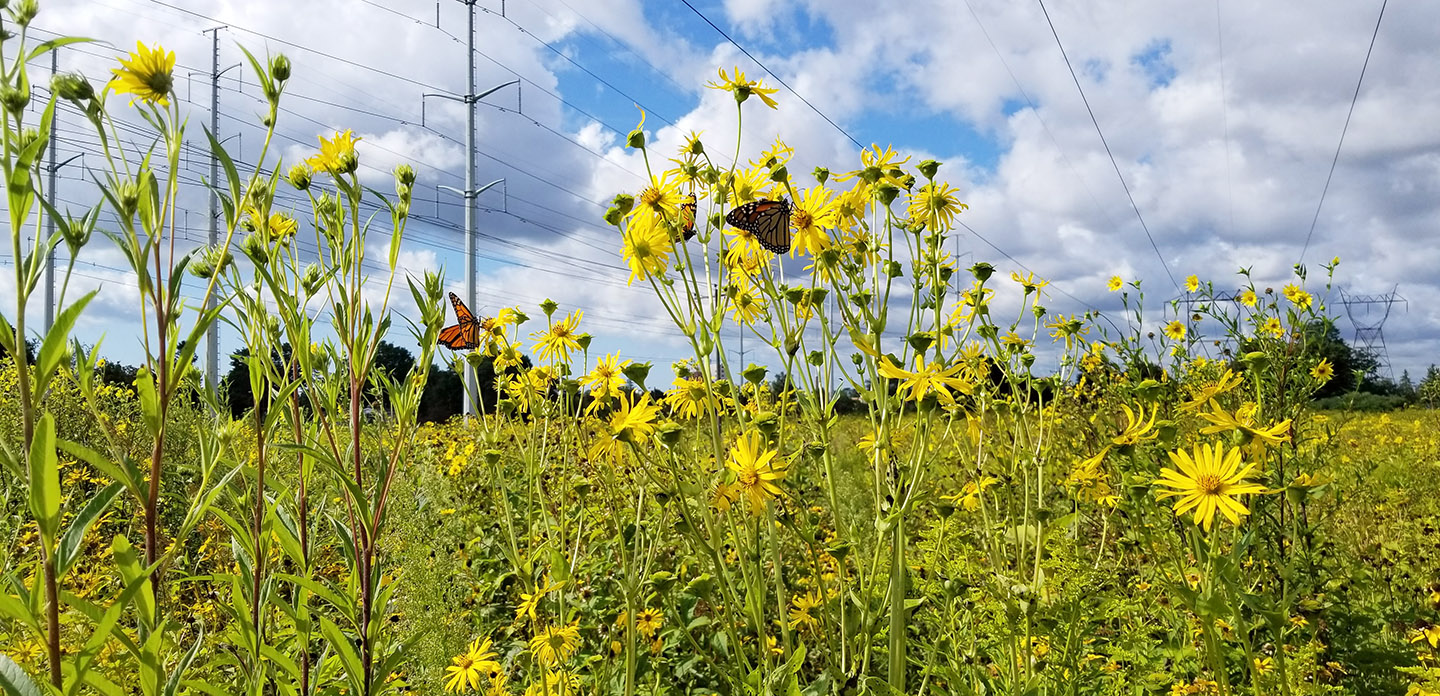
Preparing for a Transformation
It Takes Diligent Site Preparation,
Plus Time and Patience, to Create a Thriving Meadow Habitat
Posted April 29, 2020
Hi, I’m Chris — the Site Supervisor for The Meadoway.
I oversee the restoration work and crews that are transforming 16 km of hydro corridor into native meadow in Scarborough.
As a restoration ecologist, I enjoy discovering and learning about the processes involved in restoring ecosystems. What interests me most about The Meadoway is the many carefully planned steps and diverse work involved in converting mown grass into a beautiful, ecologically significant meadow.
This isn’t simply a matter of throwing some wildflower seeds on the ground! Meadow restoration is a lengthy process that involves many steps over several years — too many to cover in such a short post.
Let me give you a taste of what the most critical step is: Site Preparation.

Tractors with roto-tillers break up the turf to expose the soil, allowing germination of the seed bank.
In this stage, we prepare the soil for future native wildflower seeding.
The first step is to get rid of the existing seed bank, which includes invasive species and weeds that can easily outcompete any native seed we would put down. To reduce the existing seed bank, we run tractors with tillers that break up the turf and expose the soil, allowing them to grow.
Yes, that’s right: we want those dormant weeds to grow — at least a little — before we bring back the tractors and till them up again.

A two-centimeter invasive Canada thistle that has germinated.
We also add cover crop seed, such as oats or rye, that grow quickly and help reduce soil loss by erosion. Repeat this process several times and the number of invasive/weed seeds is significantly reduced.
Once the seed bank is minimized, you can then plant your wildflower seeds.

The number of invasive plants that have germinated from the seed bank has been reduced after multiple rounds of tilling, leaving only the cover crop.
With patience and some effort, I get to see what was originally mown grass transformed into the vibrant, colourful, and productive habitat we see below.

Time and patience after a good site preparation will lead to a thriving meadow. This section was seeded four years prior to this photo being taken.
As a parent of two young children who are passionate about nature, butterflies, and pollinators, I get a real sense of accomplishment and satisfaction knowing that I am helping to increase meadow habitat, pollinator habitat, and places for families to learn about and enjoy nature

Posted by Chris Cormack
Chris Cormack is Site Supervisor, Integrated Restoration at Toronto and Region Conservation Authority (TRCA).

